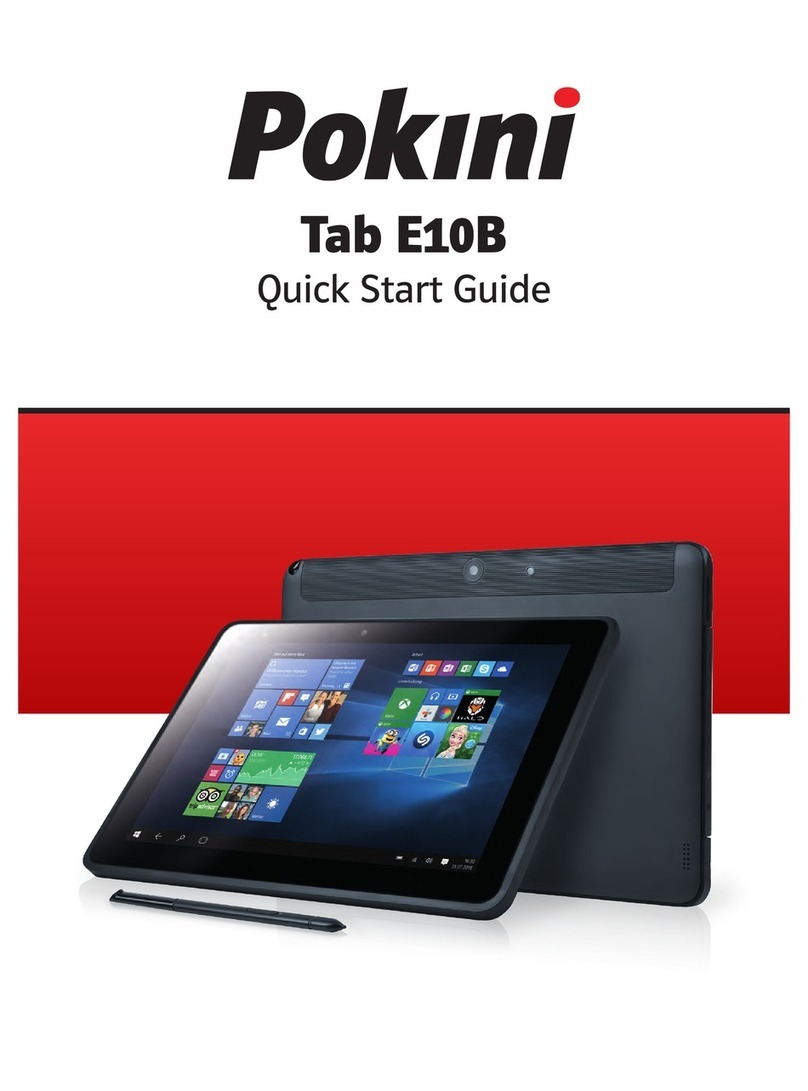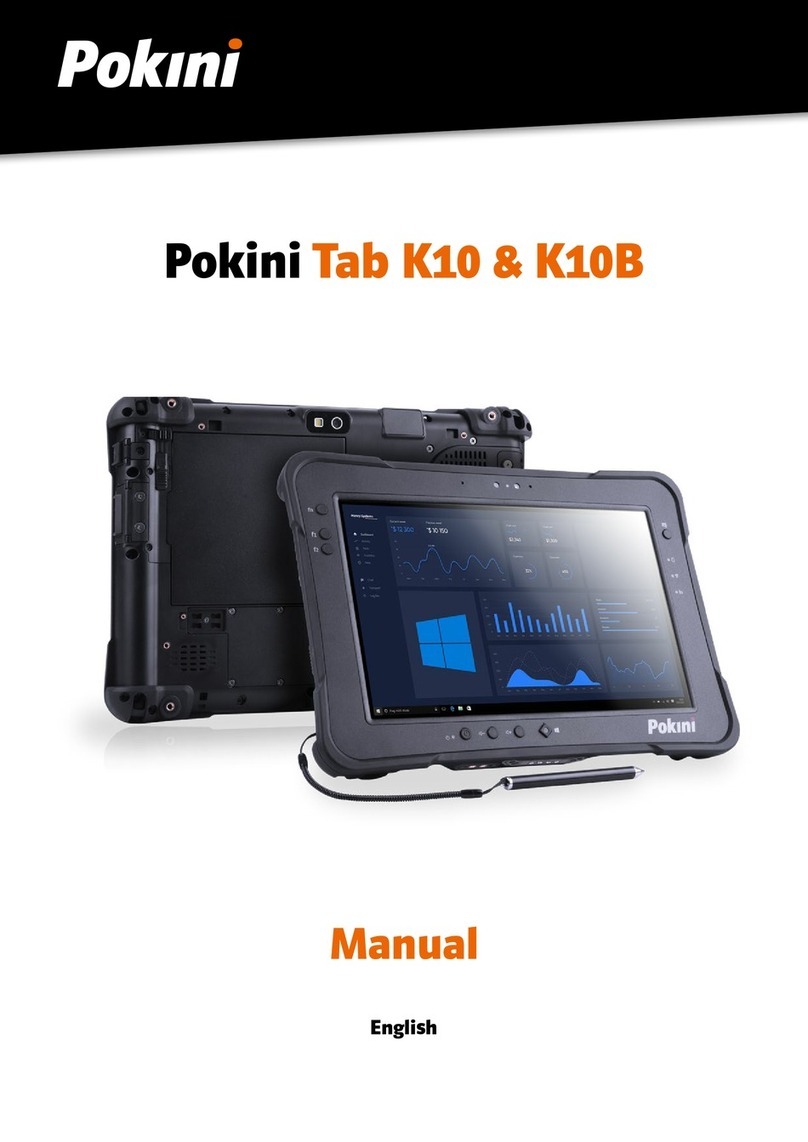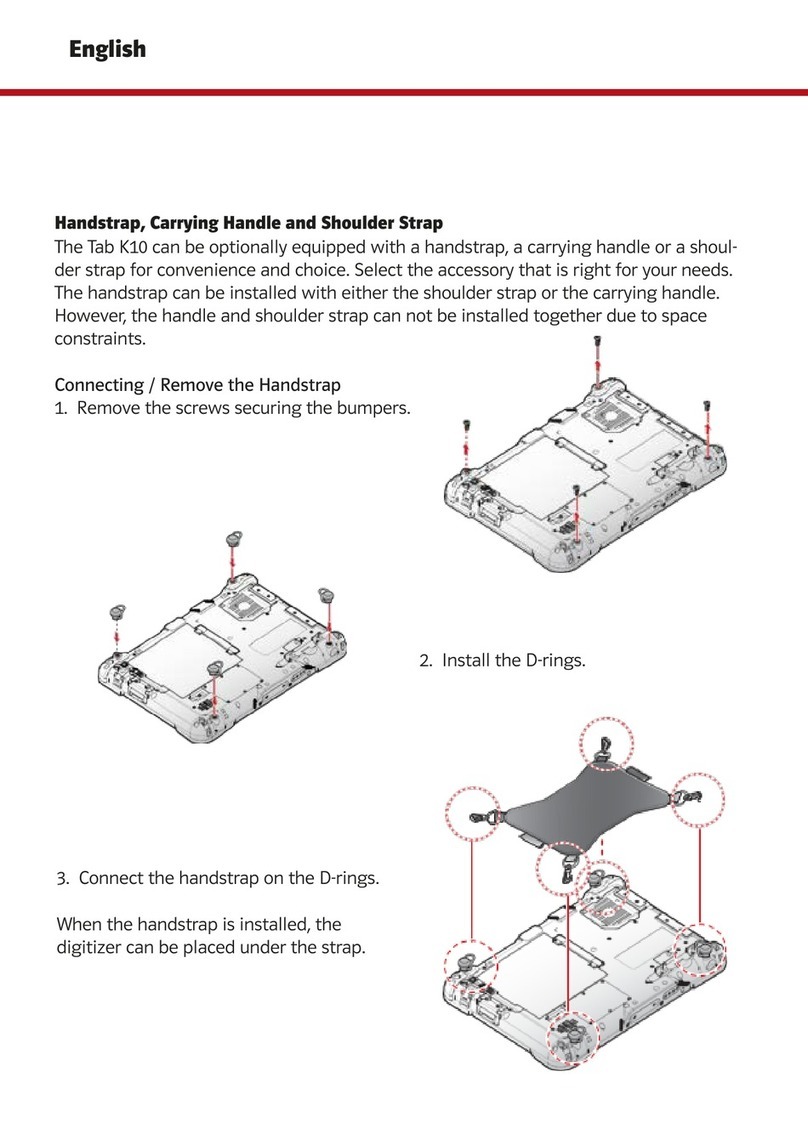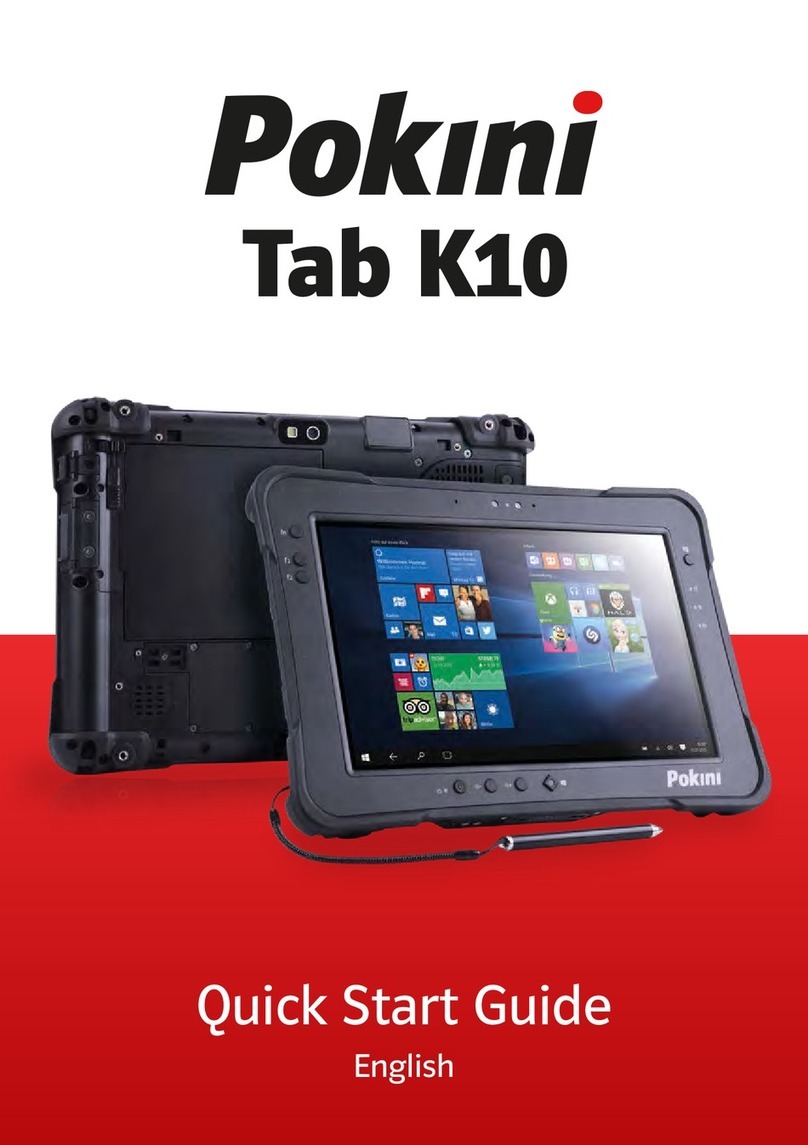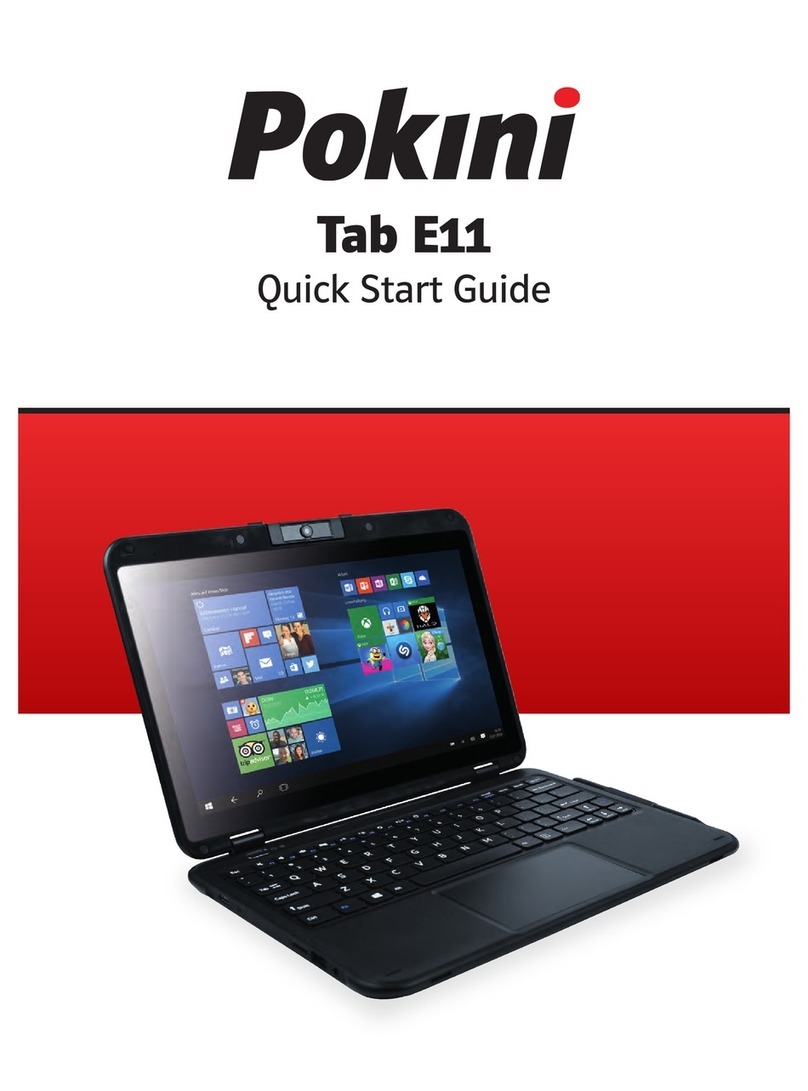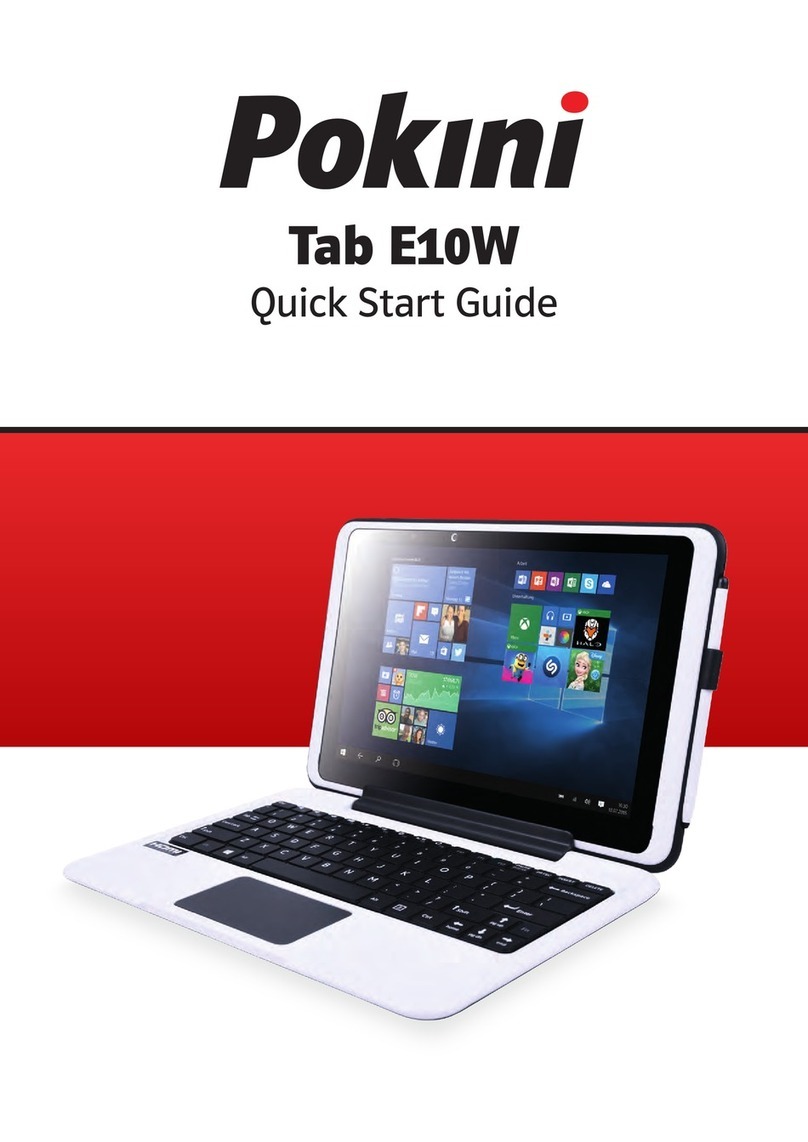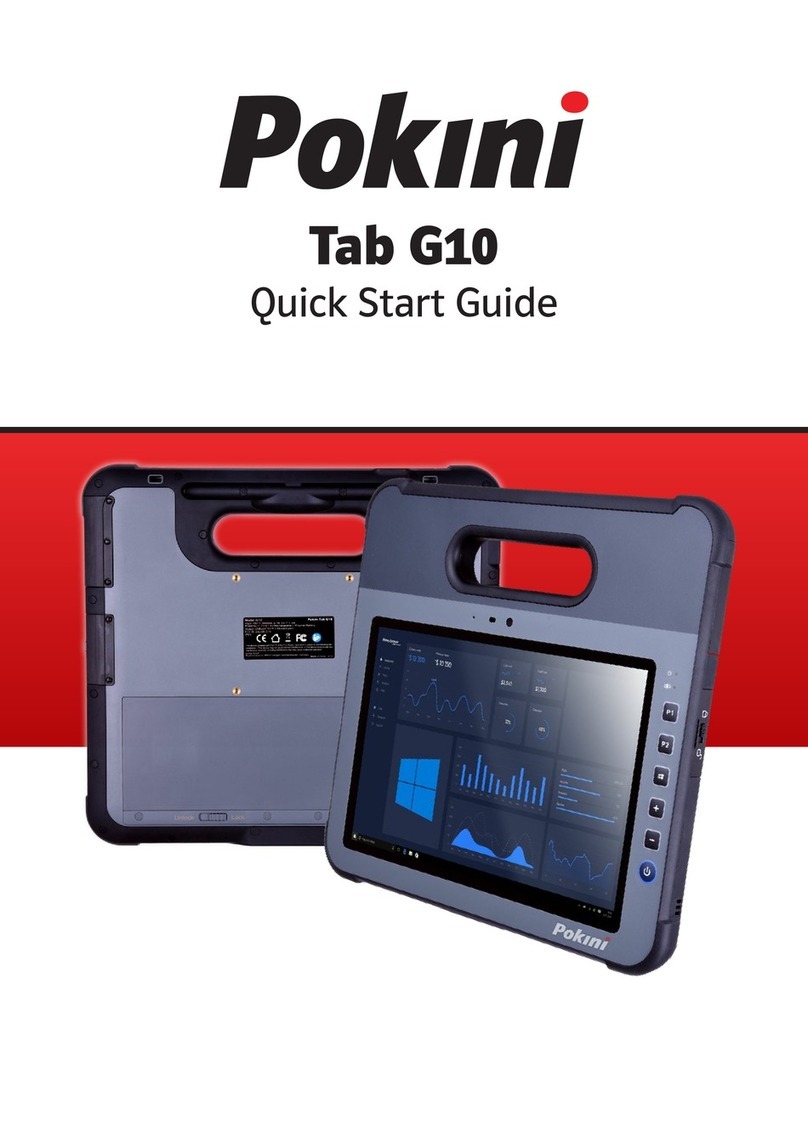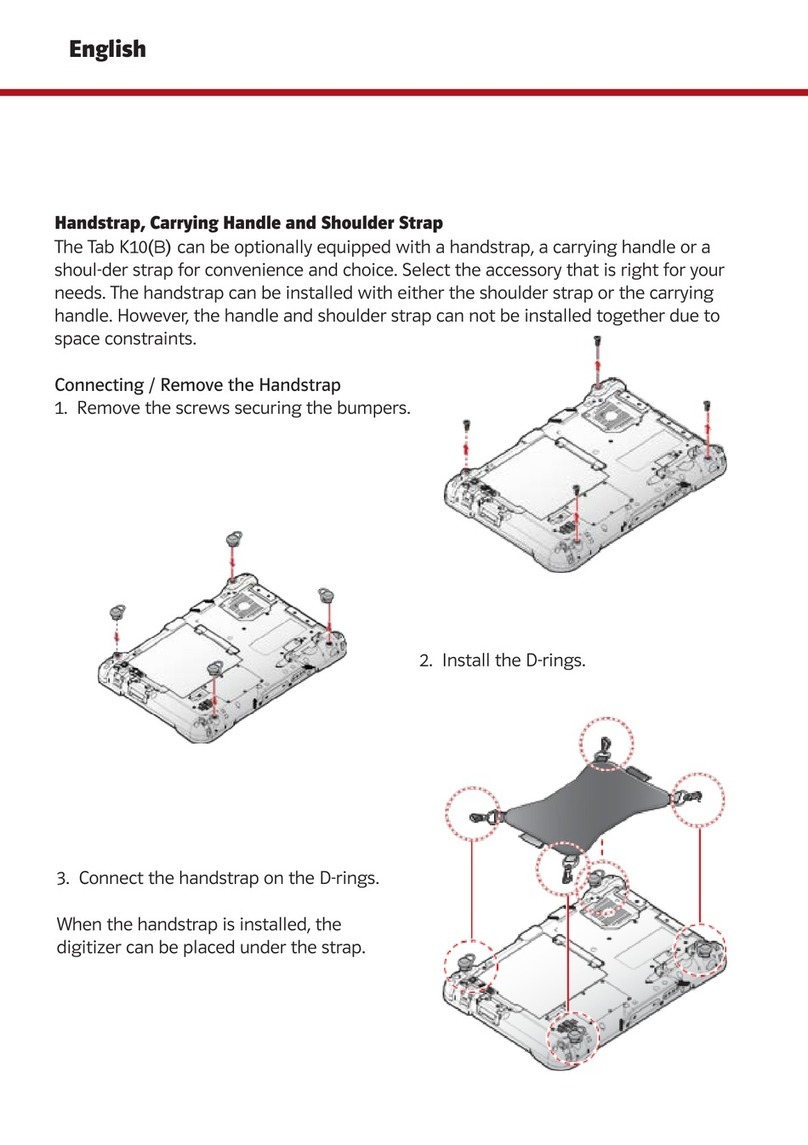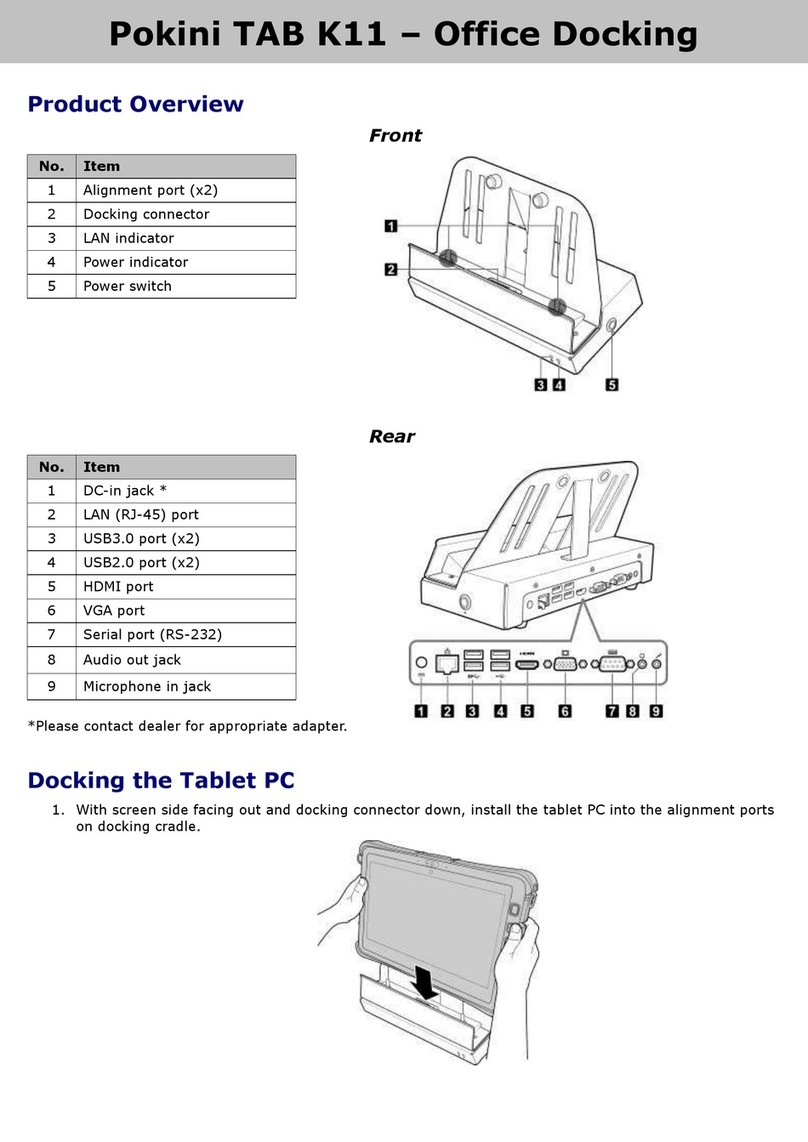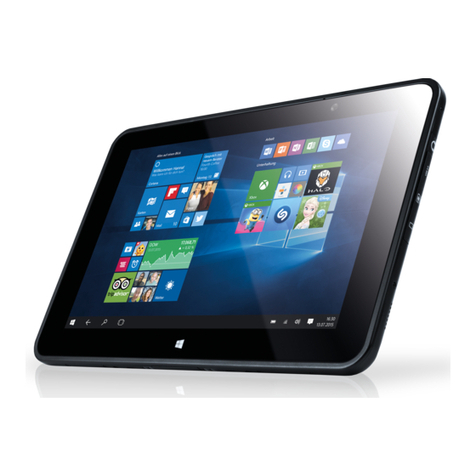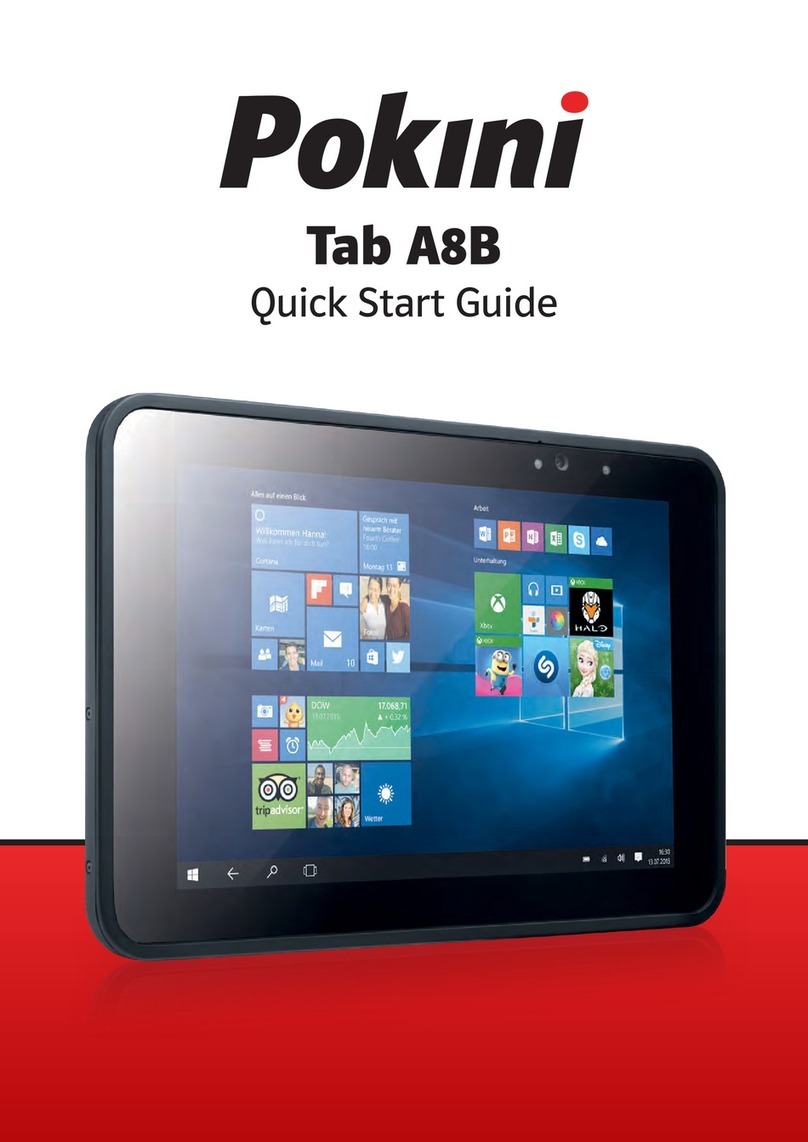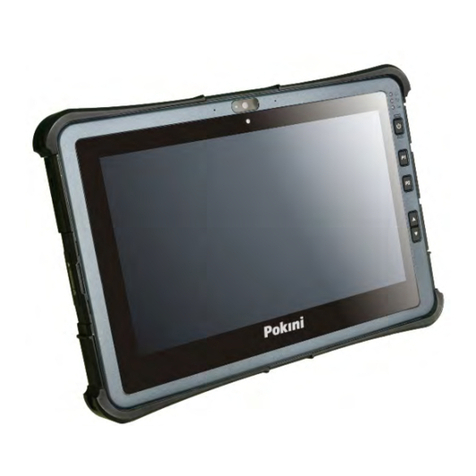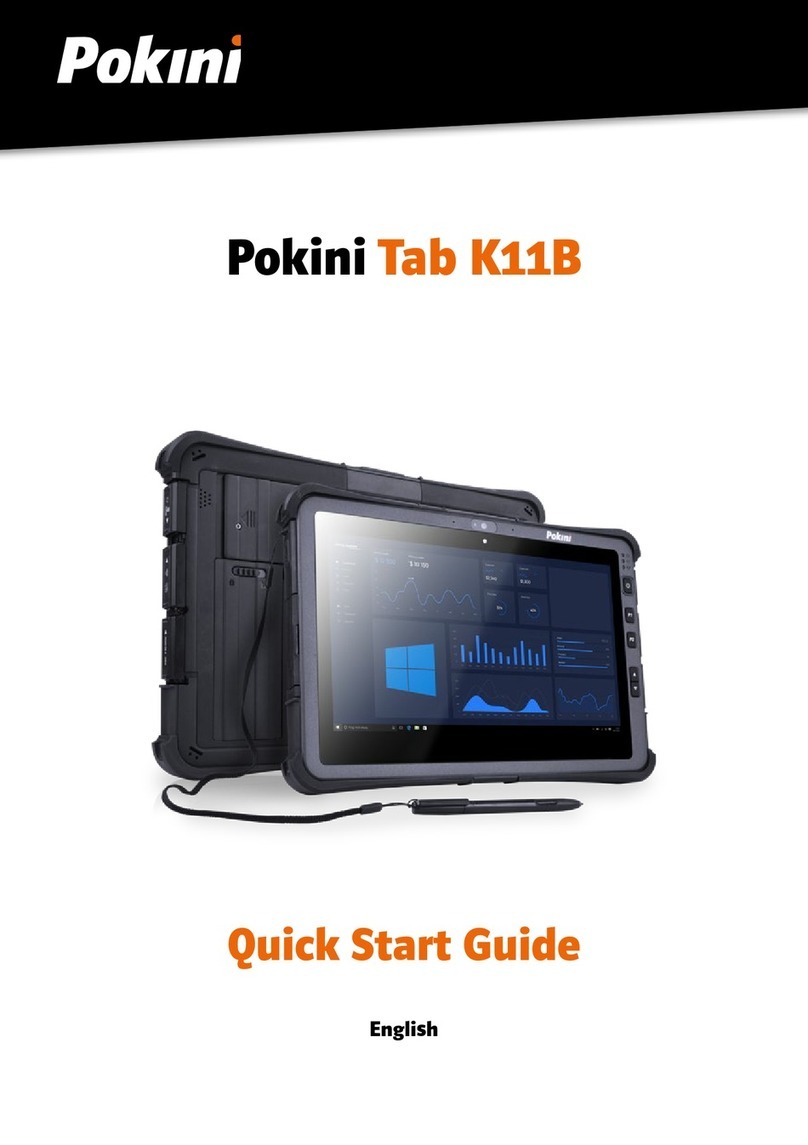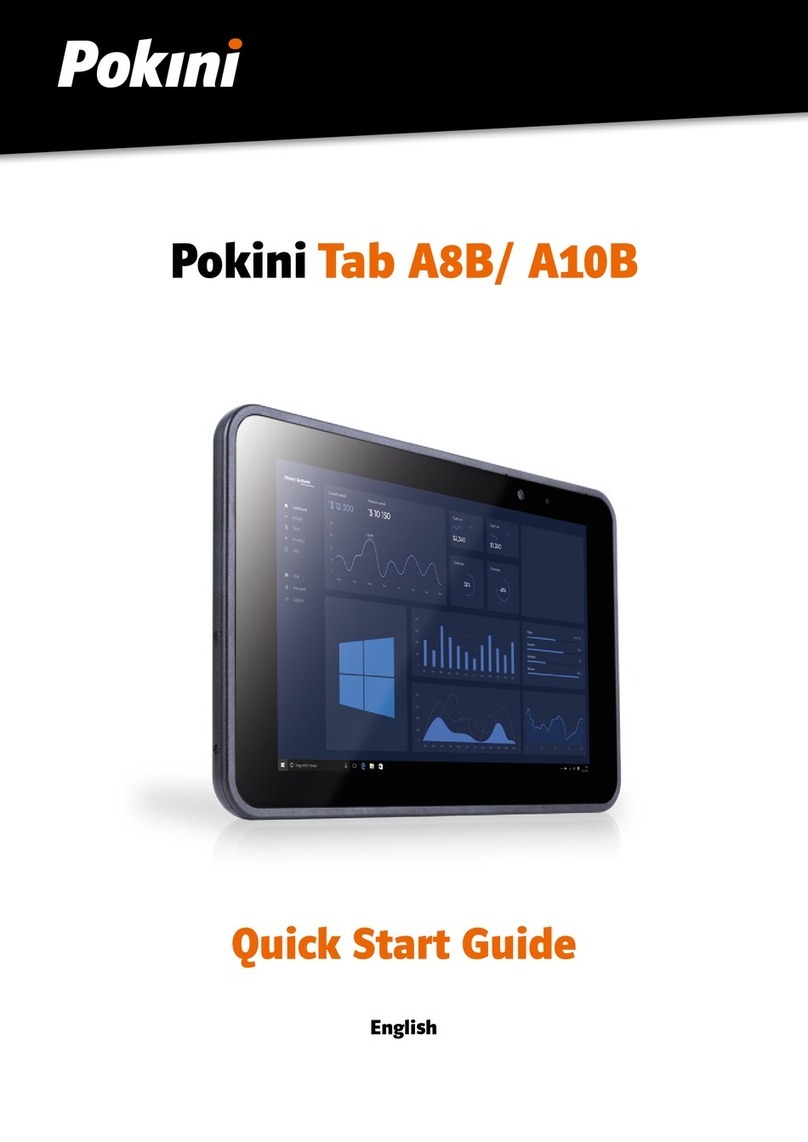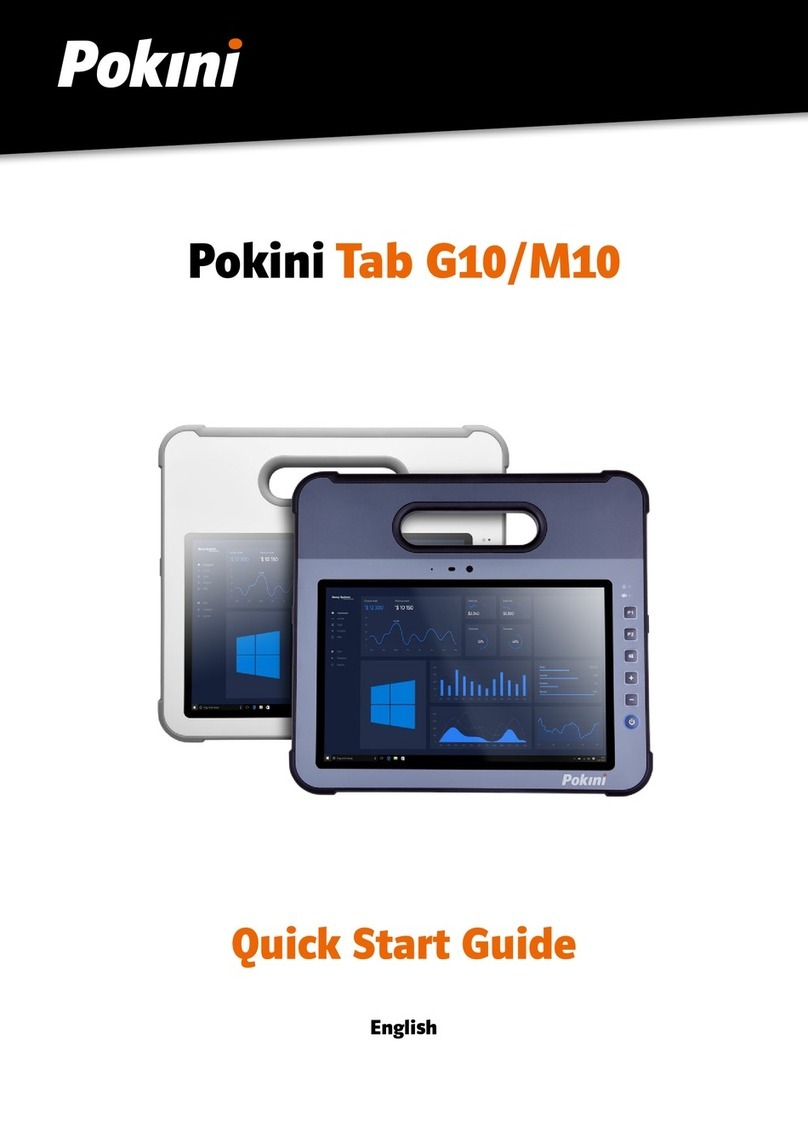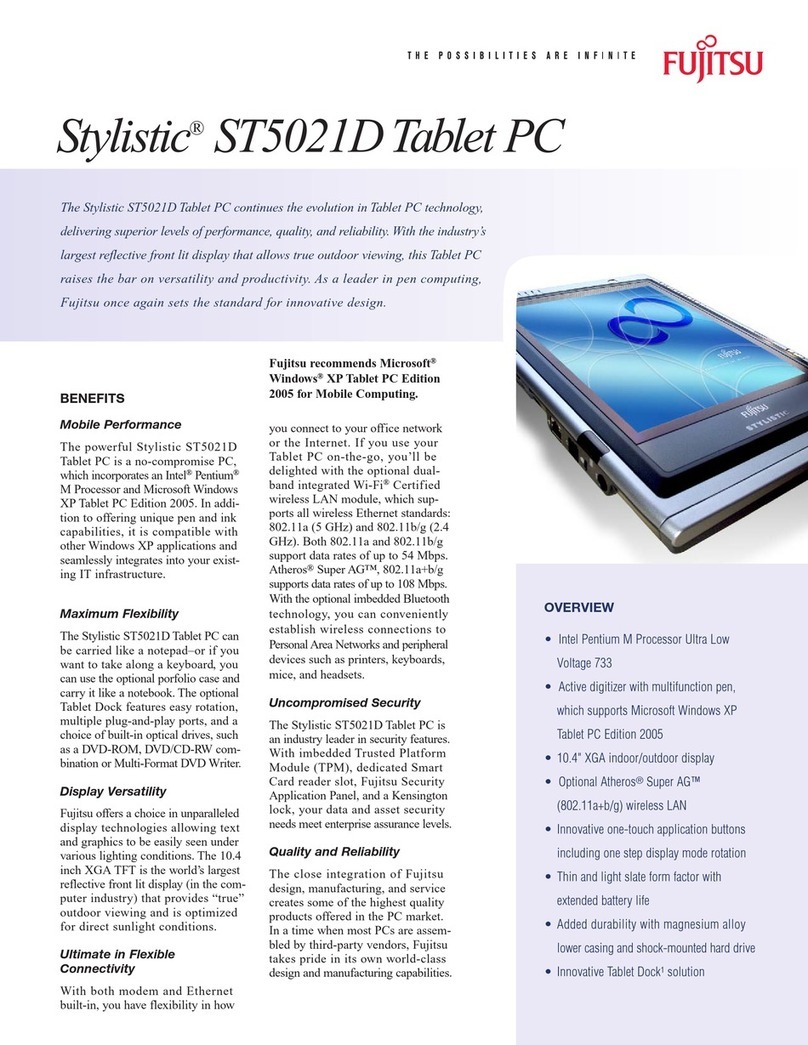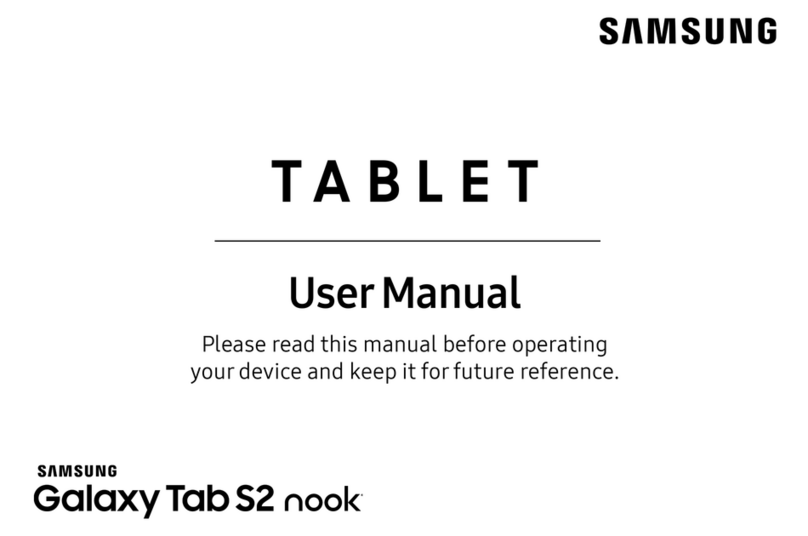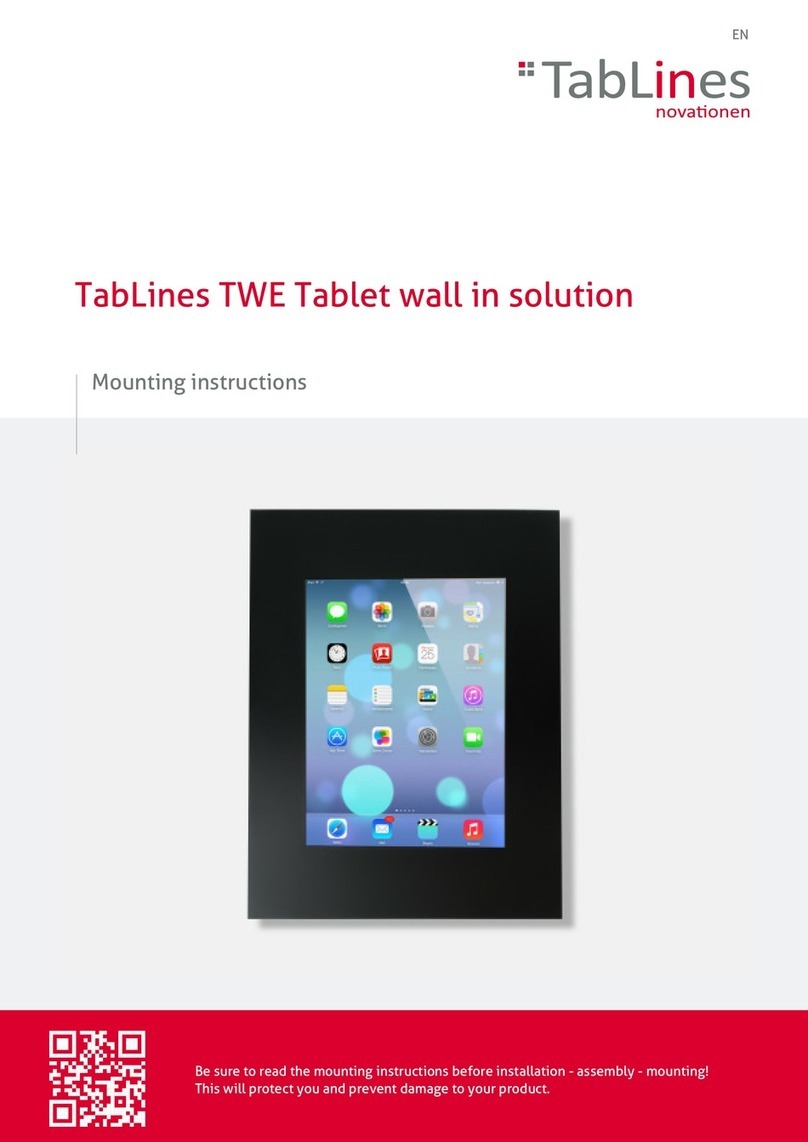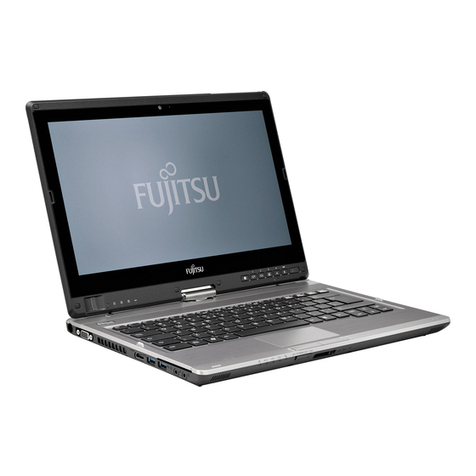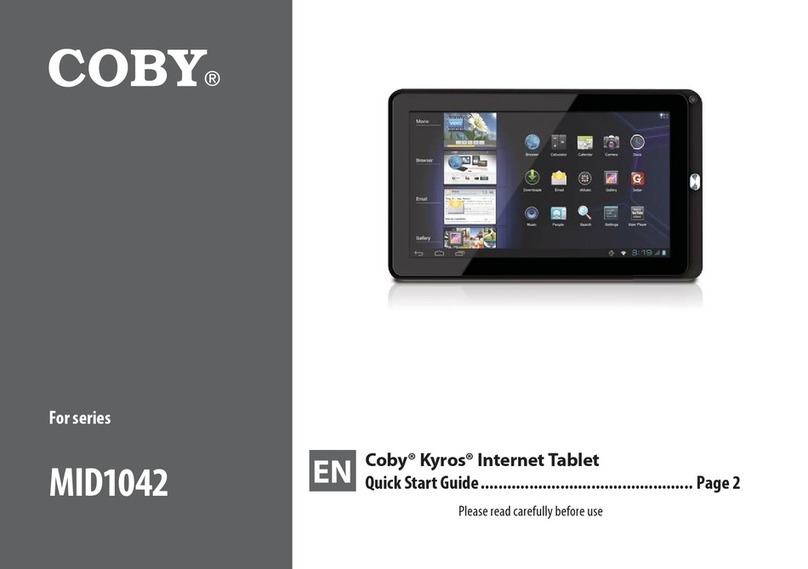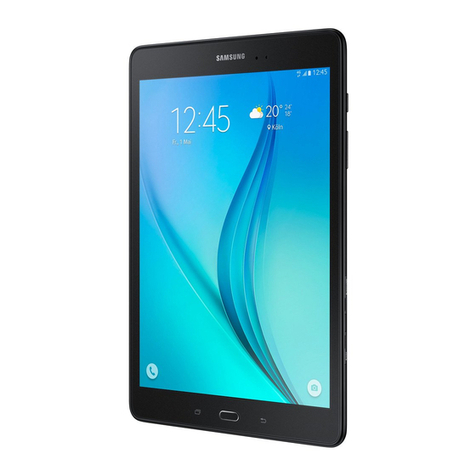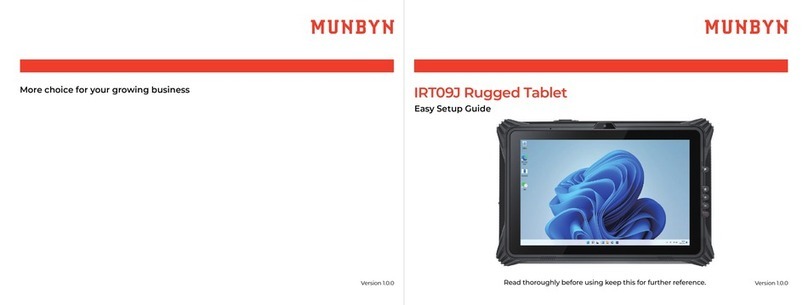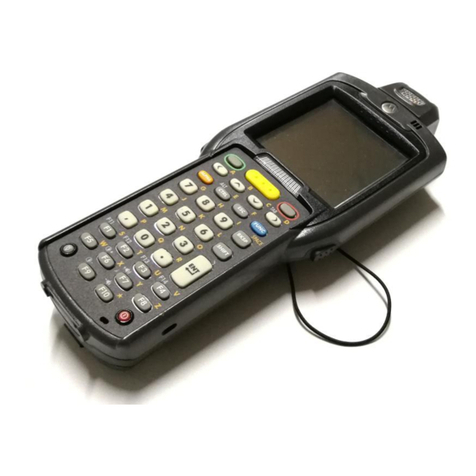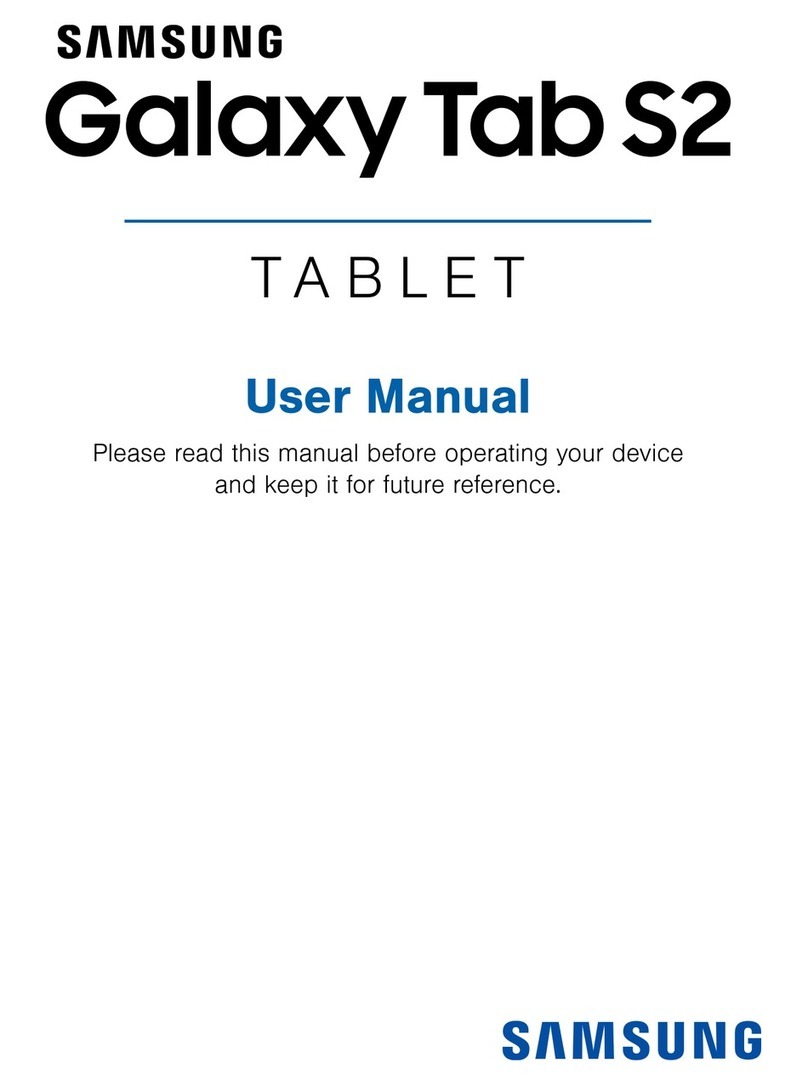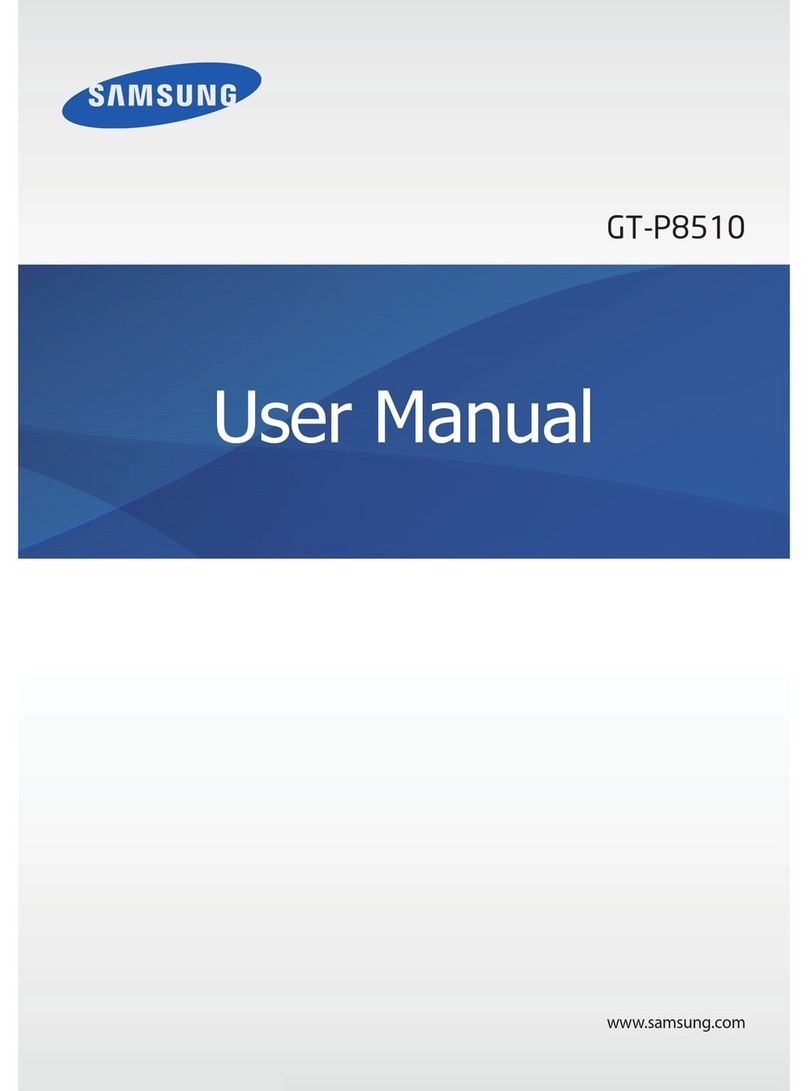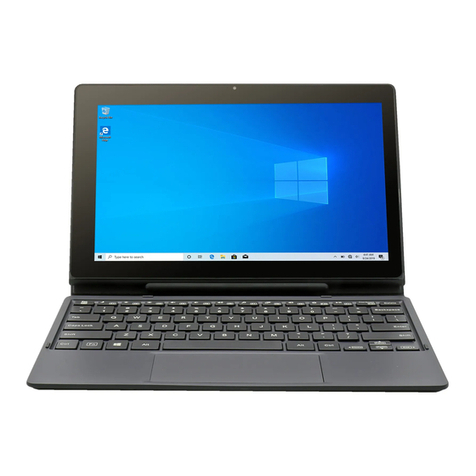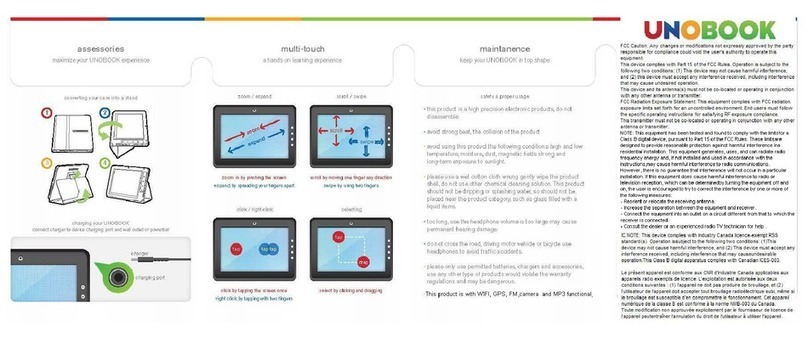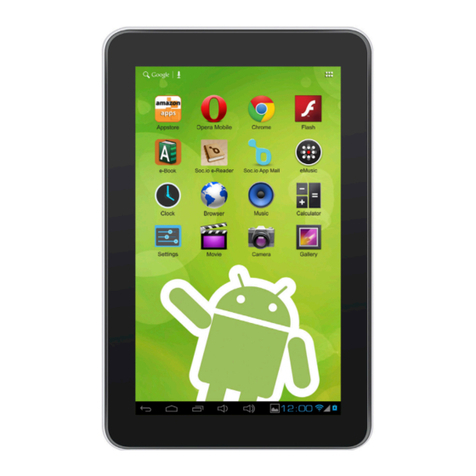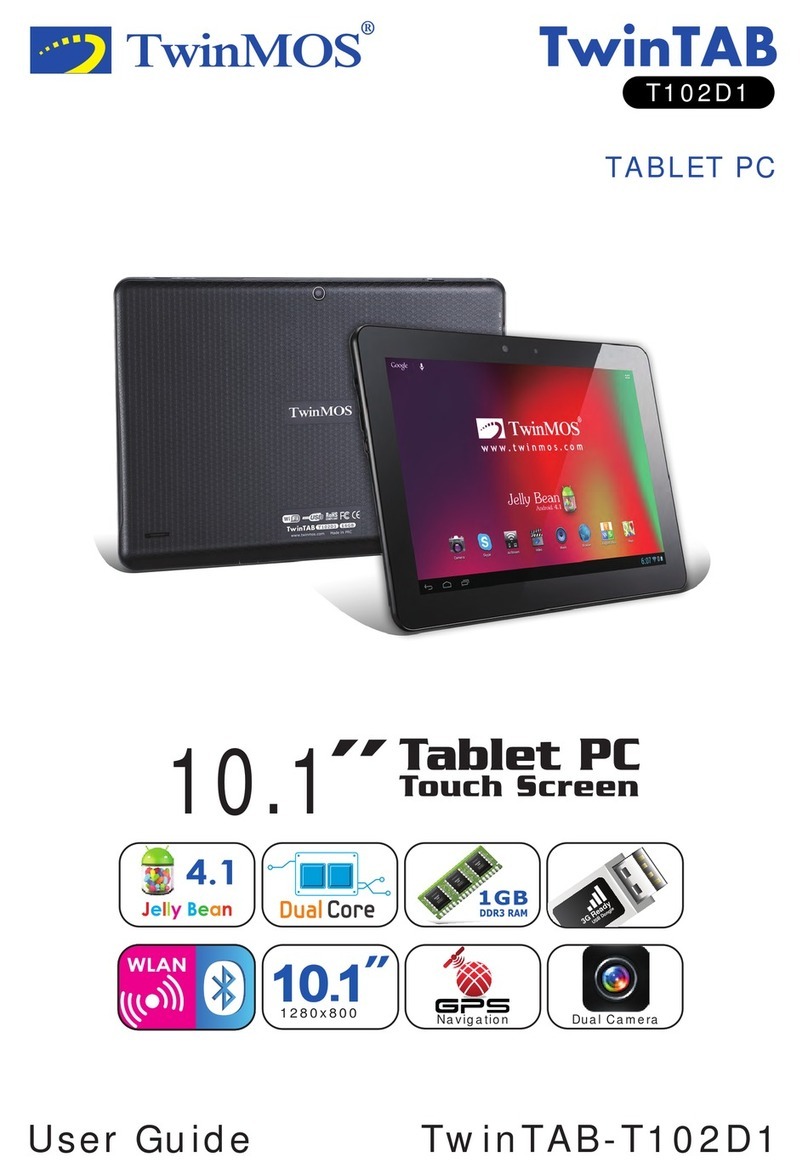
5
Wichtige Produkt- und Sicherheitsinformationen
• Vermeiden Sie es, Ihr Tablet fallenzulassen, zu verbiegen oder zu verdrehen. Dadurch können das Glas des Displays, Platinen
oder die Mechanik zerbrechen. Bei einem Glasbruch dürfen Sie die Glasteile des Geräts keinesfalls berühren oder versuchen,
die zerbrochenen Glasteile vom Gerät zu entfernen. Das Gerät darf erst dann wieder verwendet werden, wenn es durch
qualifiziertes Wartungspersonal ausgetauscht wurde.
• Versuchen Sie nicht, Ihr Tablet zu zerlegen. Hier kann es zu Beschädigungen des Geräts kommen.
• Betreiben Sie Ihr Gerät an einem Ort, wo die Temperatur zwischen -10°C und +50°C liegt.
• Laden Sie Ihr Gerät mit dem empfohlenen Ladegerät, im Temperaturbereich zwischen +10°C und +40°C.
• Bewahren Sie Ihr Gerät an einem Ort auf, wo die Temperatur zwischen -20°C und +60°C liegt.
• Dieses Produkt ist mit einem USB-C-Anschluss ausgestattet und für die Versorgung mit einem zertifizierten Netzteil gedacht,
das gemäß USB-Spezifikation 5V-12V Versorgungsspannung hat.
• Zum Laden muss sich die Steckdose in der Nähe des Geräts befinden und leicht zugänglich sein.
• Schützen Sie Ihr Gerät vor dem Eindringen von Wasser und Feuchtigkeit. Bei Nichtverwendung des Geräts müssen die
Anschlussabdeckungen geschlossen sein, um das Eindringen von Wasser und Feuchtigkeit zu vermeiden.
• Verwenden Sie zum Reinigen des Geräts ein weiches, sauberes und trockenes fusselfreies Tuch.
• Bewahren Sie das Gerät außerhalb der Reichweite von kleinen Kindern auf.
• Schalten Sie das Gerät beim Betreten eines Flugzeugs aus.
• Schalten Sie das Gerät in explosionsgefährdeten Bereichen aus.
• In geringem Abstand zum Körper erfüllt Ihr Gerät die Richtlinien für die Belastung mit Funkwellen (spezifische Absorptionsrate SAR).
• Verwenden Sie nur das zusammen mit Ihrem Tablet gelieferte Ladegerät.
• Leistung der Hauptbatterie im Scharnier des Short Flips: 3,6 V – 4,8 A
• Leistung der Kernbatterie: 3,8 V – 2,25 A
• Ziehen Sie nicht am Kabel, um das Ladegerät zu trennen.
• Verwenden Sie keine beschädigten Netzkabel oder Stecker.
• Sparen Sie Energie. Sie können Energie sparen, wenn Sie folgende Punkte befolgen.
- Schließen Sie alle Anwendungen und Datenverbindungen, die Sie nicht benötigen.
- Reduzieren Sie die Helligkeit des Displays und die Lautstärke.
- Deaktivieren Sie unnötige Töne, wie beispielsweise den Ton des Touchpanels.
- Trennen Sie Ihr Ladegerät vom Netz, wenn Sie das Ladegerät nicht benötigen.
- Trennen Sie alle nicht benötigten Zusatzgeräte von Ihrem Gerät.
• Recycling. Bringen Sie aufgebrauchte elektronische Geräte zu entsprechenden Sammelstellen. Bitte beachten Sie, dass Ihr
Tablet mit einer Batterie ausgestattet ist. Sie dürfen es daher nicht im normalen Haushaltsmüll entsorgen, da die Batterie als
Sondermüll entsorgt werden muss.
• Sicherheit der austauschbaren Batterien
- Batterien haben eine gewisse Lebensdauer. Wenn die Batterie das Gerät nur sehr viel kürzer mit Strom versorgt als üblich, ist
die Lebensdauer der Batterie möglicherweise zu Ende.
- Batterien müssen mindestens alle 6 Monate vollständig geladen werden.
- Falls Sie während der Verwendung, Aufladung oder Aufbewahrung ungewöhnliche Wärmeentwicklung, Anordnung,
Verfärbungen, Deformierungen oder anormale Bedingungen bemerken, dürfen Sie Ihr Tablet nicht mehr verwenden.
- Halten Sie das Gerät von Wärmequellen fern (die Batterietemperatur darf 60°C nicht überschreiten).
- Werfen Sie die Batterie nicht in offenes Feuer. Es besteht Explosionsgefahr!
- Tauchen Sie die Batterie nicht in Flüssigkeiten, wie beispielsweise Wasser, Tee, Kaffee usw.
- Die Batterie darf weder gestoßen, verbogen, deformiert noch fallengelassen werden.
- Stechen Sie nicht mit einem scharfen Gegenstand, wie beispielsweise einer Nadel usw., in die Batterie.
- Achten Sie darauf, dass kein Elektrolyt aus der Batterie entweicht. Sollte dies doch der Fall sein und Elektrolyt mit den Augen in Kontakt
kommen, reiben Sie keinesfalls Ihre Augen. Spülen Sie Ihre Augen sorgfältig mit klarem Wasser aus und suchen Sie umgehend einen
Arzt auf. Sollte Elektrolyt mit Ihrer Haut in Kontakt kommen, müssen Sie Ihre Haut gründlich mit klarem Wasser waschen.
- Erzeugen Sie extern keinen Kurzschluss an der Batterie. Im Falle eines externen Kurzschlusses kann die Batterie überhitzen,
sich entzünden oder kaputt gehen.
- Es besteht Explosionsgefahr, wenn Sie die Batterie durch eine nicht zulässige Batterie ersetzen. Verwenden Sie ausschließlich
die für dieses Gerät zulässige Batterie.
- Batterien müssen gemäß den vorstehenden Anweisungen entsorgt werden.
Zum Anschluss von USB3.0-Geräten während des Anschlusses an ein WLAN-Netzwerk benötigt man einen 5-GHz-Anschluss.
2,4GHz-Netzwerke werden während der Verwendung von USB3.0-Geräten seitens des Pokini Tab A6 getrennt.
